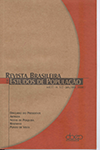Title not available in English
Abstract
This article is based on data taken from a 1795 church census listing the population of the parish of São José (excluding children under seven years of age). The fact that slaves made up nearly half the population attests to the prosperity of the region, the economy of which was already oriented toward the provisioning the domestic market. Moreover, the 60% of Africans in the slave population indicate the continued importance of transatlantic slave trade. On the other hand, whites represented only one fifth of the total population and less than half of the free population, which included free born coloreds and a substantial number of freedmen. The marked participation of freedmen in the ownership of slaves and in matrimony consecrated by the Church indicates the high degree of their integration into this colonial society and would seem to figure as a strategy for maintaining the slave system itself. Certain clues as to the forms of obtaining freedom emerge when the composition of the freed population and that of a group of slaves in the process of purchasing their freedom are examined.Downloads
Downloads
Published
How to Cite
Issue
Section
License
Papers published in Rebep are original and protected under the Creative Commons attribution-type license (CC-BY). This license allows you to reuse publications in whole or in part for any purpose, free of charge, even for commercial purposes. Any person or institution can copy, distribute or reuse the content, as long as the author and the original source are properly mentioned.

